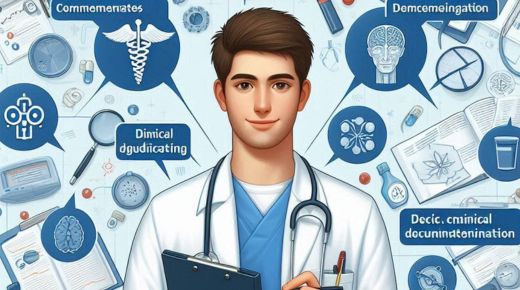Mastering clear and accurate documentation is a key requirement for medical students when they enter the clinical environment. The act of taking proper notes enhances communication among the care team, guarantees compliance with legal obligations, and enables comprehensive patient monitoring over time. Nevertheless, the extensive use of complex medical abbreviations and formatting protocols can make this seem like an overwhelming task. The people at MedAbbrev.com say that by developing strong documentation habits early on, you will be better prepared to prioritize patient safety and provide high-quality care.
The Importance of Clinical Documentation
Detailed documentation serves several crucial purposes:
- Communication: Enables different providers to quickly understand a patient’s history, condition, and treatment plan as care is transferred.
- Legal Record: Officially accounts for care delivered and medical decision-making in the event of an audit or lawsuit.
- Coding/Billing: Thoroughly documented notes justify appropriate coding and reimbursement levels.
- Research: Compiled patient records contribute longitudinal data for studies advancing clinical best practices.
While it requires diligence, developing solid documentation abilities provides an essential foundation for your future medical career.
Get Comfortable with EMR Systems
Electronic Medical Record (EMR) systems have largely replaced handwritten paper charts. While these digital platforms offer many advantages like improved legibility and centralized data, adapting to their use requires dedicated training.
Take time to thoroughly learn EMR navigation, data entry shortcuts, and your institution’s approved templates and nomenclature standards.
Understand Documentation Formats
Hospitals and clinics follow specific format requirements for elements like note organization, accepted abbreviations, dating conventions, and more. Common models are:
- SOAP Notes: Subjective information, Objective findings, Assessment and Plan sections
- APIE: Assessment, Plan, Intervention and Evaluation components
- SOAPE: Similar to SOAP with additional focused Physical Exam section
Your clinical preceptor can explain which formats are preferred.
Maximize Opportunities to Practice
Look for every chance to document a patient encounter, even if you aren’t officially scribing that day’s notes. Jot down your thoughts immediately after to reinforce proper structure and clinical reasoning abilities.
If taking part in team documentation during rounds or clinics, maximize those moments by:
- Taking detailed notes before inputting to ensure completeness.
- Asking clarifying questions if any items are unclear.
- Observing experienced staff members’ documentation habits.
Work on improving speed and condensing excess wording over time without compromising key details.
Become an Expert Navigator
Flipping between multiple EMR windows and databases is inevitable when documenting. Streamline your workflow by mastering navigation shortcuts like:
- Opening multiple patient records to review history.
- Locating previous test results or consultation notes quickly.
- Accessing information resources like clinical calculators or medication references.
Consider creating a personal notebook or EMR template to capture commonly referenced information in a centralized location.
When to Use Shorthand
Use of standardized medical shorthand can boost documentation efficiency. However, it should only be used for widely recognized abbreviations and terms.
For instance, shorthand like “HTN” for hypertension is acceptable. But entries requiring more context should always spell out terms in full, like “afebrile” rather than abbreviating.
Avoid using shorthand for crucial items such as transcribing medication names, concentrations, diagnostic impression statements, or other critical information. Always prioritize clarity.
The Importance of Reviewing
Before closing any documentation, always perform a thorough review to:
- Verify completeness of all required elements.
- Correct any spelling, grammatical or numerical errors.
- Ensure your reasoning and plan align with provided assessments.
- Check that all instructions, prescriptions, or future orders are accurate.
Ask for clarification from senior members if any details seem unclear.
Conclusion
Implementing diligent note-taking habits from the very start of training means medical students can set themselves up for success. Comprehensive documentation enhances continuity of care, inter-professional collaboration, and positive patient outcomes. It’s an essential skill serving you throughout an enriching healthcare career.


